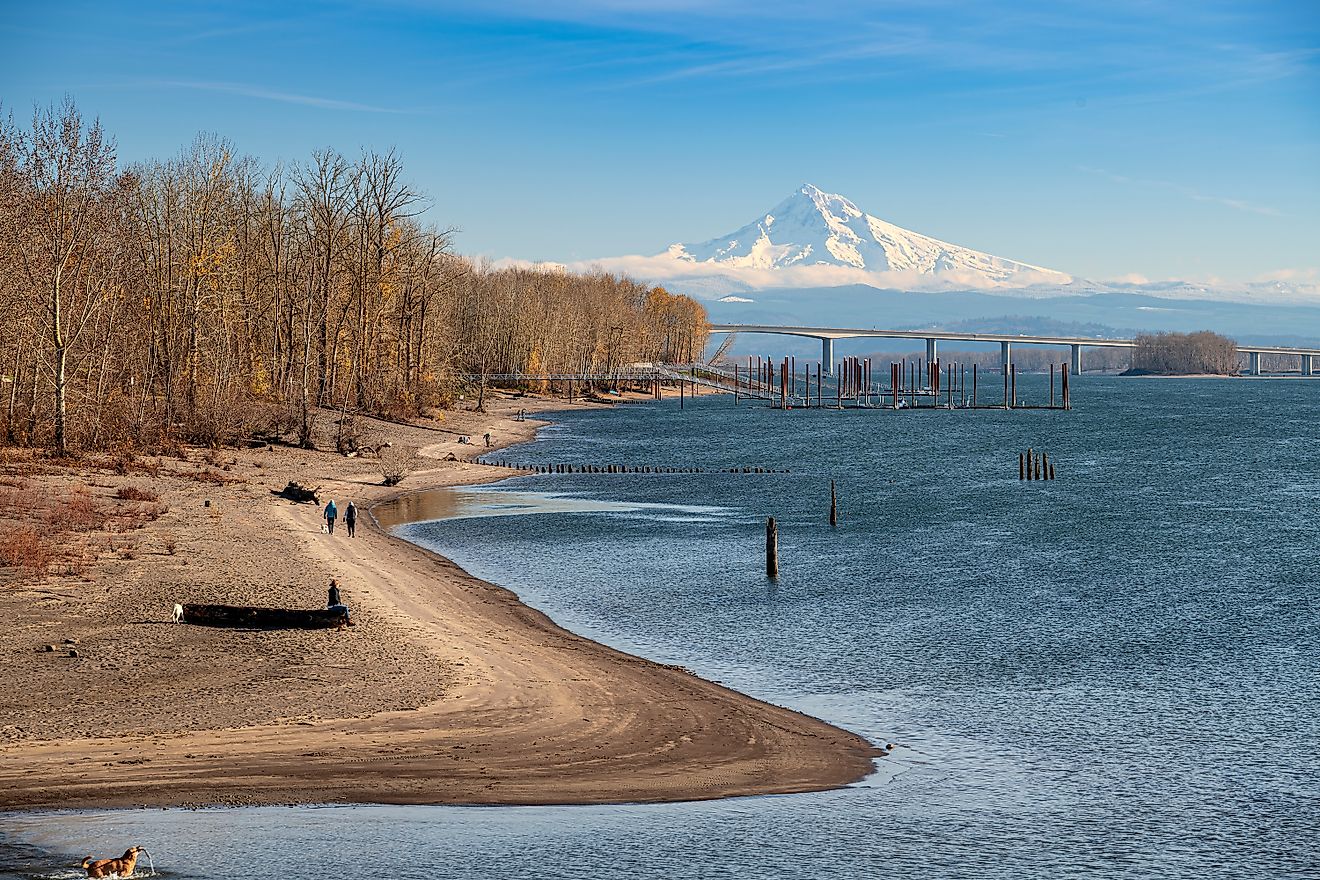
14 National Parks In Tennessee
The United States is home to many national parks, with many of the best located in the state of Tennessee. This comprehensive list features many historically and naturally monumental sights every visitor must experience during their trip to the state.
Appalachian National Scenic Trail
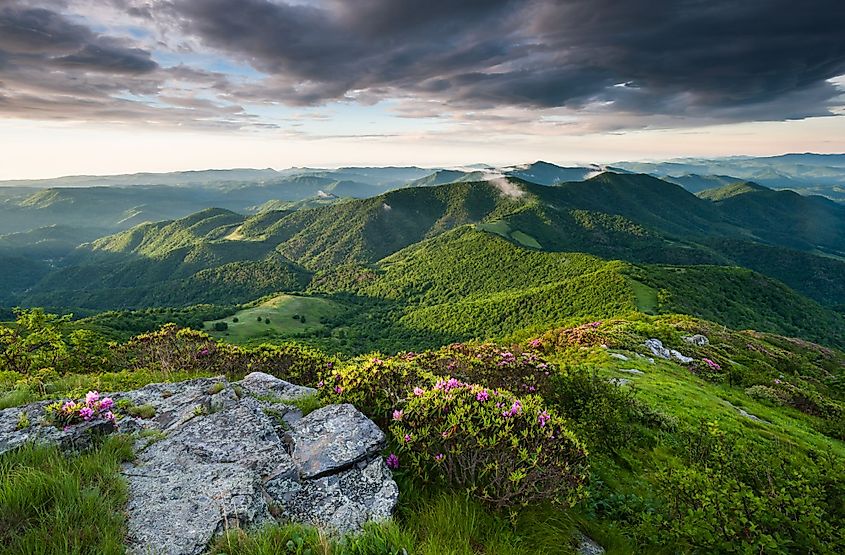
The chasers of atmospheric vistas will find their fill at the Appalachian National Scenic Trail's over 2,100 miles worth of footpaths. Running along the Appalachian Mountain ridgelines, it meanders through eight national forests from Mount Katahdin in Maine to Springer Mountain in Georgia, passing through 6 different national parks. Created by a forester and opened in 1937, it is used mainly for a short distance and section hikes by nature enthusiasts and backpackers, while conquering the whole trail takes 5-7 months through 14 states. Best in fall foliage and with wildlife including black bears, moose, deer, and bobcats, the notable natural landmarks are the White Mountains, the Great Smoky Mountains, Springer Mountain, Mount Rogers, and the Blood Mountains.
Big South Fork National River and Recreation Area
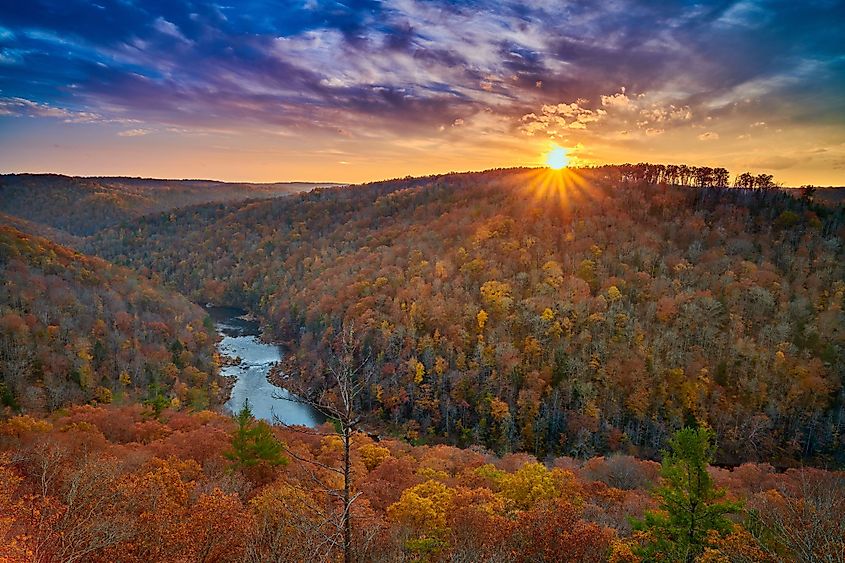
Set on the border of Tennessee and Kentucky, 61 miles northwest of Knoxville, the wild and beautiful Big South National River and Recreational Area spreads for 125,000 acres over the Cumberland Plateau traversed by the Cumberland River. The great trails for hiking and horseback riding meander through various landforms, including over 90 miles of sandstone bluffs, gorges, and tributaries for white water paddling and rock climbing. There is also the largest collection of arches and rock bridges found outside of the Arches National Park in Utah for endless exploration and sights, while the Bandy Creek provides perfect grounds for camping to enjoy nature under the starry skies.
Chickamauga and Chattanooga National Military Park
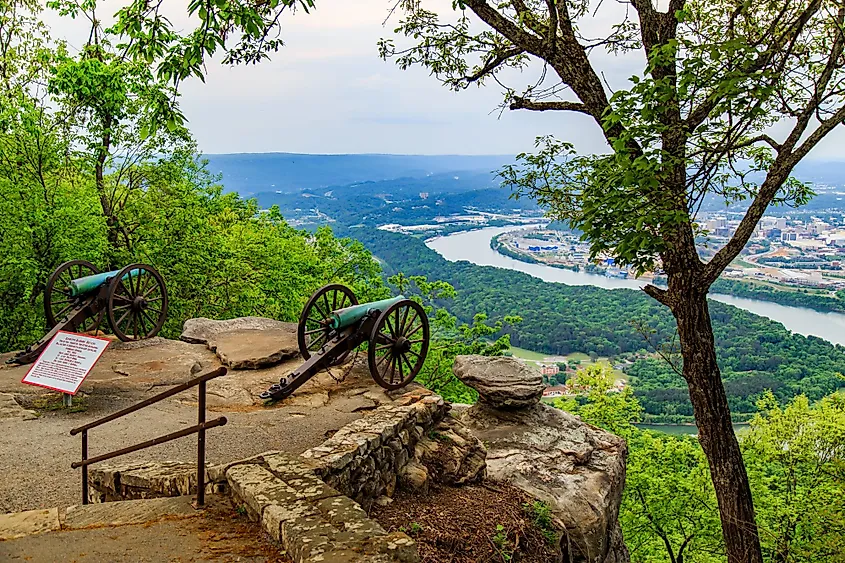
The first federally protected battlefield in the United States, the Military Park, was created decades after the Civil War by soldiers wishing to commemorate the campaigns fought over Chattanooga. Comprising two separate large battlefields, the Chattanooga and Chickamauga across the state line in Georgia, they hold the memory of the 34,624 soldiers' death toll as the second largest in the Civil War, only preceded by the Battle of Gettysburg. The visit begins with a park video followed by a self-guided auto tour, where one can attain breathtaking panoramic views of Chattanooga from Point Park on Lookout Mountain and the Tennessee River from Signal Point northwest of the city.
Cumberland Gap National Historical Park
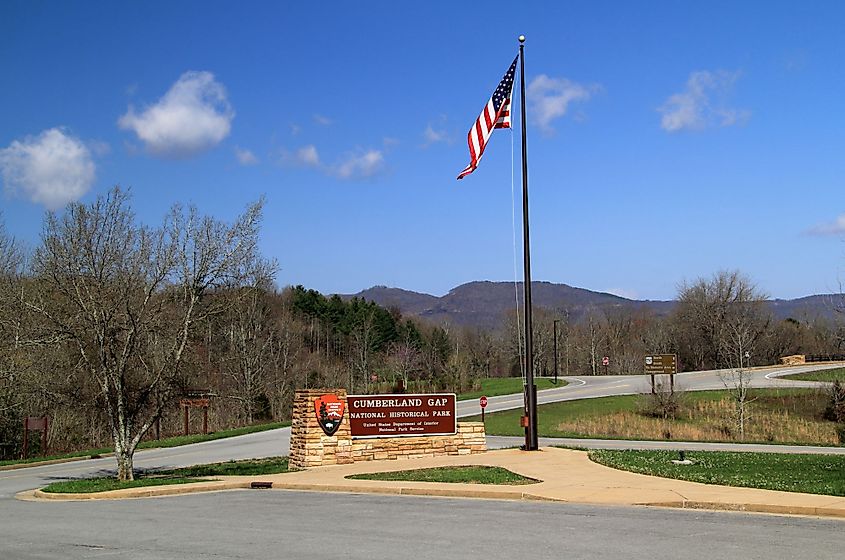
Set south in the nation, this natural mountain gateway is one of the earth's greatest miracles and the first gateway to the west. Touching three states, along with Western Virginia and Kentucky, it was initially three distinct natural structures of the Pine Mountain Thrust Sheet, the Middlesboro Syncline, and the Rocky Face Fault. The features combined through erosion and natural changes over many years to form the large ridgeline. Used predominantly by Native Americans crossing the mountains, it was named after the Battle of Culloden's Prince William, Duke of Cumberland, son of King George II of Great Britain. The gap was paved by the American buffalo traversing the ridge for the salt in the region, featuring caves and other formations to see and feel part of a significant piece in American history.
Fall Creek Falls State Park, Spencer
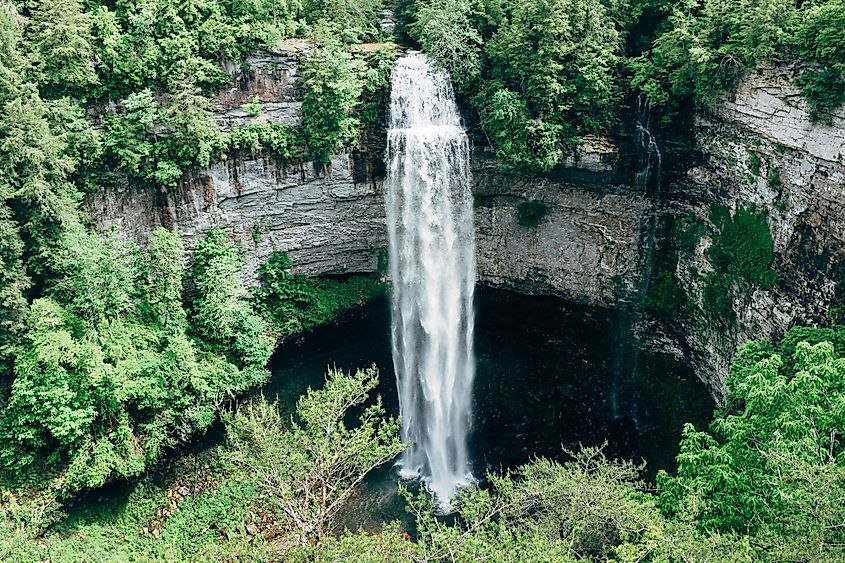
The largest and one of the most-visited, the 29,800-acre park, spans across the eastern Cumberland Plateau. Comprising gorges, waterfalls, streams, and forests, one must visit the 256 feet-tall waterfall that is one of the highest in the east. Aside from boating, fishing, swimming, hiking, and bird-watching, the park is beloved for the 18-hole championship golf course with a feel of civilization in the midst of a wilderness. The active can partake in rock climbing and a canopy challenge course, while the 222-site camping area spreads over five different sections of the park with traditional and RV-compatible sites, as well as cabins, for staying without leaving the natural area.
Great Smoky Mountains National Park
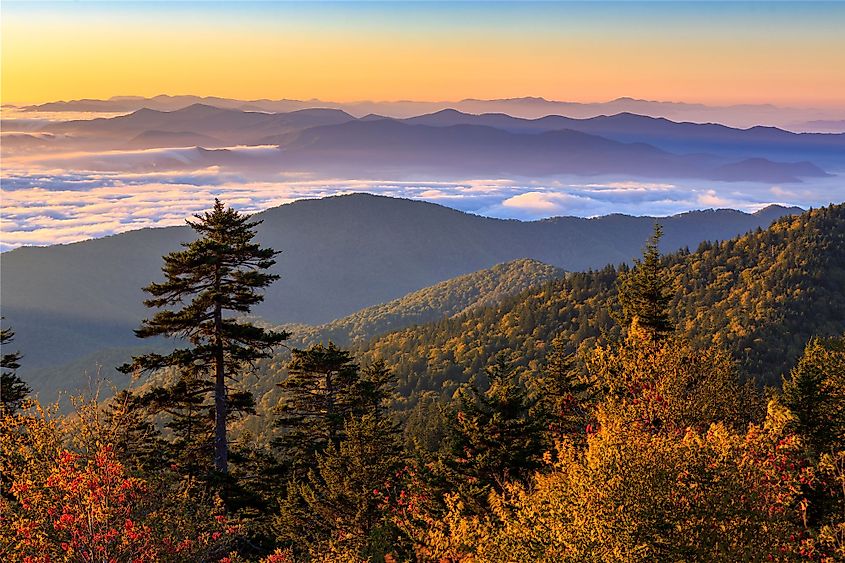
The most-visited in Tennessee with 12.5 million annual passer-byes, the park is reachable via a day-worth drive for 60% of the national population. The 522,427 acres of accessible wilderness feature rugged landscapes with mountaintops permeated by a hazy blue mist, including the Clingmans Dome, the highest peak in Tennessee, dominating at 6,500 feet. There are 900 miles of diverse trails to cover via hiking, mountain biking, or horseback riding, with 1,400 species of flowering plants. Densely forested, the park features four campgrounds, along with many rivers and streams to fish among the lush summer cover or the dizzying autumn foliage.
Manhattan Project National Historical Park

The historically significant Manhattan Project National Historical Park is one of the most incredible parks in the world. Comprising three separate sites, with two others in Hanford, Washington, and Los Alamos, New Mexico, the Oak Ridge section is set in Tennessee. Part of the Manhattan Project, it partook in creating the world’s first atomic bombs for World War II that were dropped on Hiroshima and Nagasaki. Opened in 2015, one can travel back in time through the many historic sites, facilities, and artifacts, along with stories of the scientists and engineers involved in changing the course of history. The Oak Ridge comes with three hidden complexes accessible for public viewing that played a role in plutonium making for the “B Reactor,” including the X-10 Graphite Reactor National Historic Landmark and the Y-12 complex.
Natchez Trace National Scenic Trail
All hiking enthusiasts rejoice in the incredible Natchez Trace National Scenic Trail, where biking is not allowed, but horseback riding is encouraged. Initially a 500-mile run from Natchez in Mississippi to Nashville in Tennessee, the trail is now split into five sections: Highland Rim Trail, Blackland Prairie, Yockanookany, Rocky Springs, and Potkopinu. The scenic 444-mile Natchez Trace Parkway gives access to the 60-mile trail that was one of the nation’s first National Roads, along with many newly formed trails. Running through hardwood forests, wetlands, Spanish moss, swamps, overlooks, and rock outcroppings, one gets to discover history through the sights and sounds of the early people in the area.
Obed Wild and Scenic River
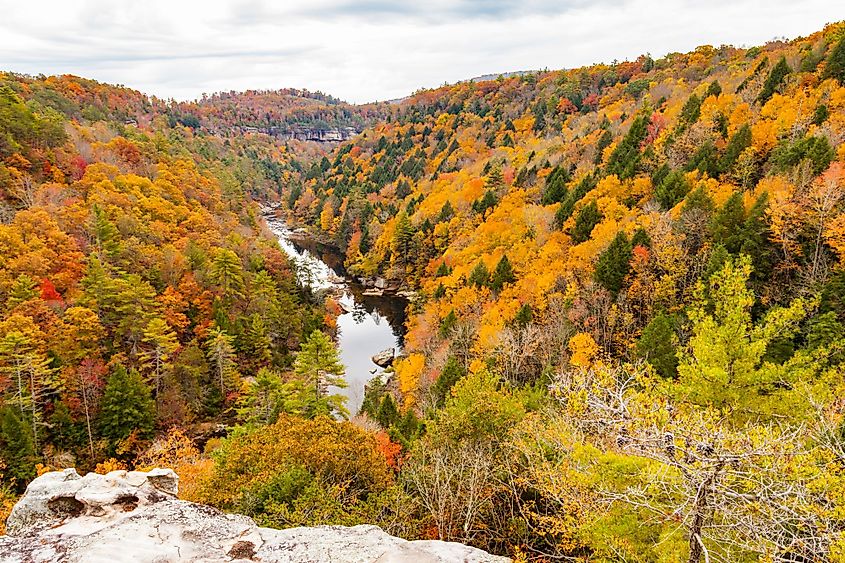
The Obed Wild and Scenic River comprise a 45-long river system on the Cumberland Plateau. Standing the test of time from when it was discovered by European settlers in the 1700s, it is a dream come true for white-water enthusiasts and adventure seekers. Rock-climbers also enjoy trying their prowess on the 500-foot-deep gorges with sandstone bluffs along the river. More activities include kayaking, canoeing, bird-watching, and fishing for bass, bluegill, catfish, and muskie native to the area. There are also campgrounds to enjoy nature through the night.
Reelfoot Lake State Park

Set in the northwest corner of the state, the Reelfoot Lake State Park comes with a 15,000-acre lake, great for boating and fishing. Comprising a unique flooded forest ecosystem created through an earthquake in the 1800s, it is home to many species of birds and aquatic plants. Seeing Bald eagles in winter, there’s even a festival in their honor in February. The whole array of activities to suit any taste and interest in visiting include hiking trails with bird-watching opportunities, two lake-side campgrounds with water and electricity, as well as an auditorium for gatherings and events.
Rock Island State Park, Rock Island

Set in the heart where the Caney Fork, Collins, and Rocky Rivers meet, the Rock Island State Park spans 883 acres of ruggedly beautiful landscapes. A state park since 1969, the island is also home to the Great Falls 30-foot horseshoe waterfall located under the 19th-century cotton textile mill. The gorge offers a great vantage point overlooking the waterfalls and limestone paths where hikers and explorers have their fill of action. Comprising a popular day trip from Nashville, there are cabins along with 60 campsites at two campgrounds suitable for RVs and tents dotting the river system that is a dream-come-true for freestyle-kayaking and paddling enthusiasts.
Shiloh National Military Park
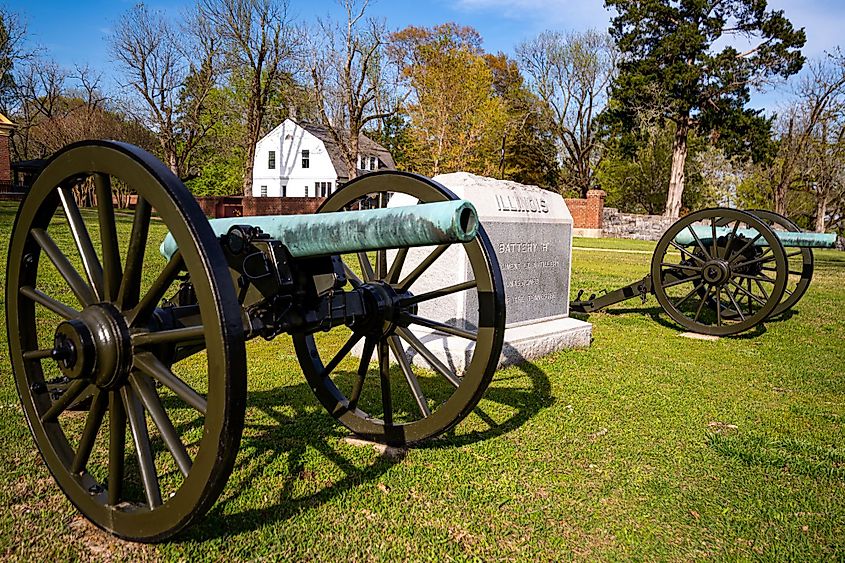
The somber Shiloh National Military Park calls one to take a trip back to the Battle of Shiloh in 1862, where 23,746 out of the 100,700 Union and Confederate soldiers lost their lives over two days of attacks and counterattacks. Located along the shores of the Tennessee River, the tranquil 9,324-acre park houses their shadows, with the Shiloh National Cemetery set on the high bluff above the river. For more history, one can take the road south along the river to the Shiloh Indian Mounds National History Landmark, with remnants of an Indigenous community from 800 years ago.
Stones River National Battlefield

Set 25 miles southeast of Nashville, the park welcomes visitors any time of year to tour the Battle of Stones River battlefield. Leaving Nashville on December 26, 1862, the Union forces attacked Confederate troops at Murfreesboro, with the battle lasting from New Year's Eve to January 2, 1862, as the bloodiest in the Civil War. Upon ending with Confederates withdrawing from Murfreesboro, the death toll of 23,500 soldiers was the highest percentage of casualties during the war. Visitors can tour the site, take advantage of the visitor's center, and utilize the 7 miles of trails that connect to the city for more varied activities. One can also take a bike tour to see some of the most famous artifacts at the notable sights of the Civil War in Tennessee.
Trail of Tears National Historic Trail

Commemorated through the Trail of Tears, the historic heartbreak stretching back and across nine states began with the Indian Removal Act in 1830, requiring various Indian tribes to give up their lands in today's southeastern United States and relocate west of the Mississippi River. Although fiercely resisted through 1835, most of the significant tribes eventually relocated to the Indian Territory in present-day Oklahoma. The Cherokee were split by the Treaty of New Echota signed by a small fraction of the tribe in late 1835 and ratified in May 1836, with the Cherokee removal beginning in May 1838. The U.S. Army troops and various state militia forcefully evicted over 16,000 Cherokee Indian people from their homelands in Tennessee, Alabama, North Carolina, and Georgia, first to "round up camps" and then to one of the three emigration camps, from which they were forced to move further to the Indian Territory by water. The devastatingly difficult migration of fourteen detachments was orchestrated by Principal Chief John Ross over existing roads between August and December 1838. The "Trail of Tears" commemorates the old, the young, and the sick that died during their trip west, with hundreds more deserting and perishing. Despite trying to reassert themselves over many years in the new, unfamiliar land, the descendants of those who made it comprise a proudly resilient and independent tribe, recognizing the past adversity but moving on by investing in the future.
Some of nature's grandest gifts, these parks come with immense views of the fresh air for day-hikes, camping, and recreational activities. Comprising an array of natural and historical sights, one is guaranteed to have lasting memories to reminisce about forever after.


